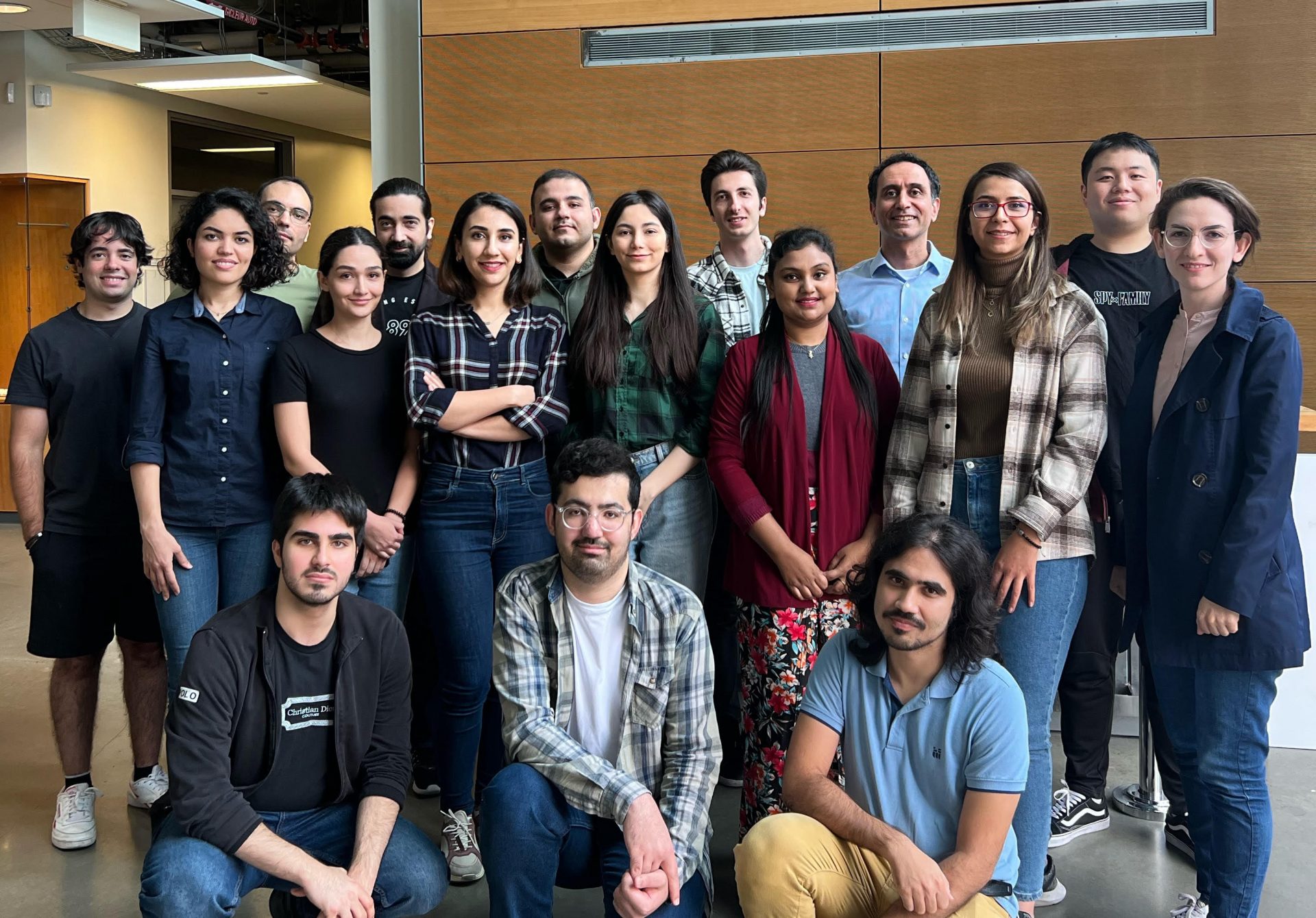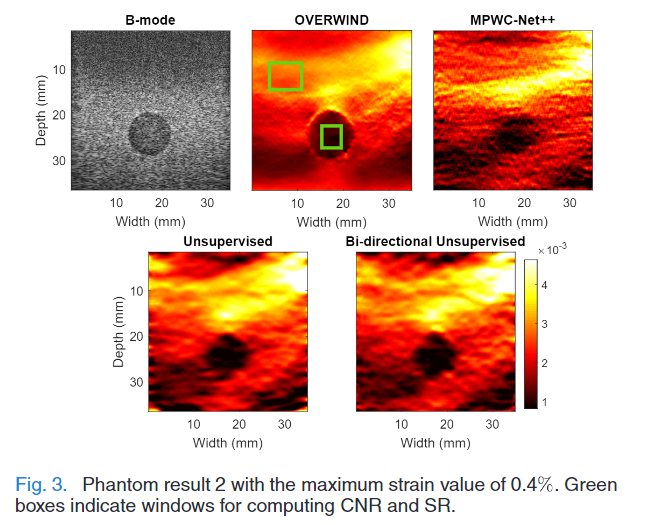The dataset contains 2200 RF data pairs of different regions of CIRS phantom (model 059). The phantom contained a number of hard inclusions. The background has an elastic modulus of 20 kPa and the inclusions have at least twice elastic modulus of thebackground. This phantom was utilized to obtain training andtest data. We employed Alpinion E-Cube R12 research US machine (Bothell, WA, USA) for training and test. The L3-12H linear array probe with the center frequency of 10 MHz and the sampling frequency of 40 MHz was utilized for image acquisition. The dastset has been used for unsupervised training for ultrasound elastography in [1] and [2]. Two samples from [2] are shown below:
To use the dataset, download all zip files and extract the first file (Data_121706.zip.001). This will extract all zip files. Zip files cannot be extracted separately. Should you have any questions, contact : alikafaei1991@gmail.com
The purchase of the Alpinion ultrasound machine was partly funded by Dr. Louis G. Johnson Foundation.
If you use this dataset please cite the following papers.
[1] KZ Tehrani, Ali, Morteza Mirzaei, and Hassan Rivaz. “Semi-supervised training of optical flow convolutional neural networks in ultrasound elastography.” In International Conference on Medical Image Computing and Computer-Assisted Intervention, pp. 504-513. Springer, Cham, 2020.
[2] Tehrani, Ali KZ, Mostafa Sharifzadeh, Emad Boctor, and Hassan Rivaz. “Bi-Directional Semi-Supervised Training of Convolutional Neural Networks for Ultrasound Elastography Displacement Estimation.” IEEE Transactions on Ultrasonics, Ferroelectrics, and Frequency Control (2022).
[3] Mirzaei, Morteza, Amir Asif, and Hassan Rivaz. “Combining total variation regularization with window-based time delay estimation in ultrasound elastography.” IEEE transactions on medical imaging 38, no. 12 (2019): 2744-2754.



